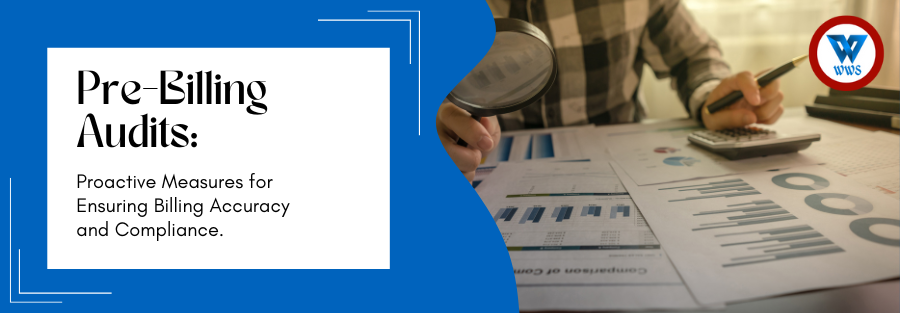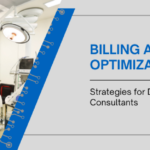Introduction
Pre-billing audits are an important part of a medical practice’s compliance program. Pre-billing audits are not the same thing as performing an actual audit on the billing files, but they can be a key component to ensuring your Practices have proper documentation and compliance procedures in place before sending out claims for payment, A pre-billing audit will help ensure your practice is compliant with Medicare/Medicaid regulations, HIPAA guidelines, and any other regulations related to Patient Privacy
Pre-Billing Audits
Pre-billing audits are used to improve billing accuracy and compliance. They help ensure that the right patients are billed for the right services, and this can be done at either the practice level or payer level.
Pre-billing audits at the practice level: These audits involve reviewing claims before they’re submitted to a payer to identify errors that may have been missed during internal quality control processes (QC). For example, when you run an E/M code through your software system’s built-in checker, it will flag any potential problems with your claim such as missing information or incorrect data fields being filled out. However, these checks aren’t always thorough enough–there might be some errors that slip through undetected despite running through all of these checks ahead of time! By performing a pre-billing audit on each claim before submitting it for payment approval from Medicare or another insurer/payer, you can catch any potential issues before sending them off into cyberspace where no one will ever see them again forevermore…or until some poor soul gets stuck dealing with those pesky patient appeals down at headquarters seven months later after getting denied coverage because someone forgot about their chronic condition even though they had documentation proving otherwise.
Document Review
The goal of the document review is to determine whether the documentation supports the billing claims. The reviewer should look at these factors:
- Patient mix–the types of patients treated, such as age and gender, who they are, and what they have been seen for
- Payment history–how often you receive payment from payers (insurers) and how much you receive
- Coding and billing practices–whether your office is following industry standards for coding and billing
The most common issue found during a document review is that claims were submitted without supporting documentation. The second most common issue found during a document review is that there was no documentation on file at all!
Billing Accuracy
Billing accuracy is a key component of revenue cycle management. It’s the ability to bill for services accurately and to submit claims on time, which ensures that you don’t overbill or underbill your patients.
Billing accuracy is an important part of the revenue cycle management process because it allows providers to collect reimbursement from payers in a timely fashion without having to worry about getting paid back later due to errors or omissions made on their behalf by staff members who aren’t trained properly to avoid such mistakes from happening again in future interactions with payers like Medicare/Medicaid/Medic-Cal accurate billing is just one way to ensure that your practice can succeed financially. If you’re looking for a provider in the Salinas, CA area who can help you with your revenue cycle management needs, look no further than Medical Billing Services of Monterey County!
Audit Process
The audit process is a systematic and comprehensive review of your institution’s billing information. It includes the following steps:
This step involves reviewing all documentation associated with a given claim or set of claims, including medical records, diagnostic tests, procedures, and service dates. The goal is to ensure that appropriate documentation exists for each patient encounter to support payment for services provided by your organization. Data Analysis In this step, your billing department will review the claims data and compare it with the documentation reviewed in
the previous step. This ensures that your organization is accurately reporting charges and payments to the insurance company.
This step is important because it ensures that your organization’s data are accurate and reflects payments made by the third-party payer. The goal of this step is to ensure that your claims have been paid in full and that you have received all applicable reimbursements.
The final step of the audit process is reporting and analysis, which involves providing a summary of your findings to management. This allows them to identify any discrepancies or issues in their billing system so they can be addressed before they cause problems with depositing payments into your bank account.
A Pre-billing audit involves reviewing documentation, payment history, and patient mix before billing
This can be done in several ways:
- Reviewing claims for errors or missing data
- Checking for duplicate or overlapping services that could reduce reimbursement
- Assessing whether or not the charges you’ve submitted are appropriate (for example, if you billed for an MRI but did not perform one)
Reviewing documentation to ensure that it supports the services billed Reviewing claims for errors or missing data before submitting them to your payer is a good way to ensure that you don’t make mistakes. When reviewing claims, look for these common errors: Incorrect CPT codes and modifiers (such as the use of incorrect modifiers) Wrong procedure code Incorrect patient name or identification number Incorrect service date or time
Conclusion
Pre-billing audits are an important part of ensuring that your practice runs efficiently and is compliant with payer requirements. By conducting a pre-billing audit, you can ensure that you’re billing correctly and accurately before sending out any claims. This will save time and money as well as reduce stress on your staff and patients by eliminating any potential errors from being submitted into the system by mistake.



